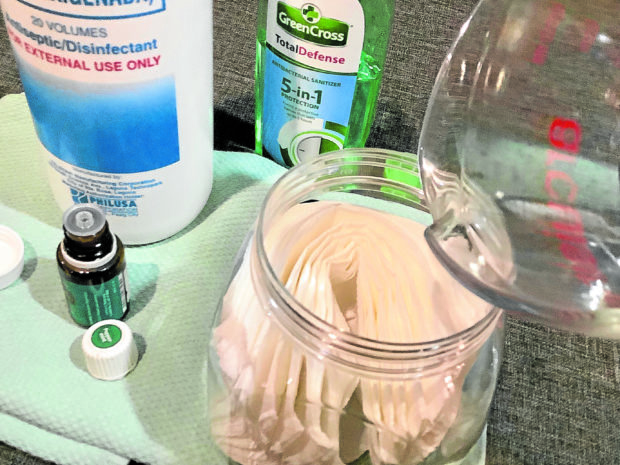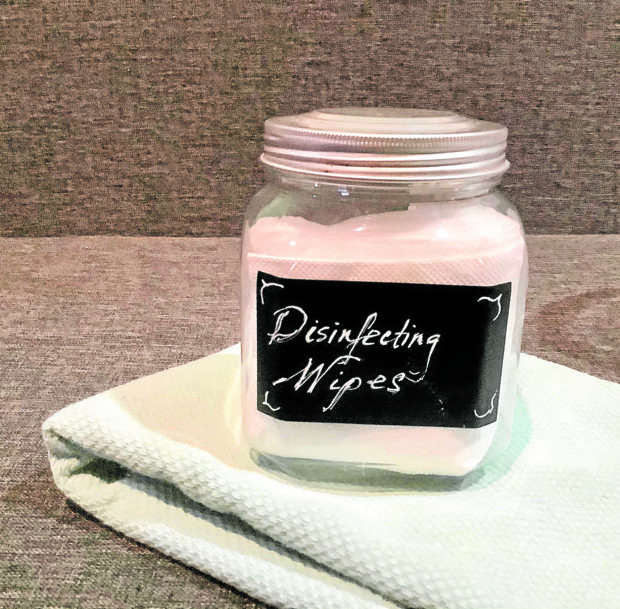
It isn’t enough to see surfaces around our homes sparkly and clean; we need them to be germ- and virus-free. After washing with soap and water, disinfecting by spraying or wiping down is very important. High-contact surfaces like doorknobs, faucets, switches, cell phones and keys are likely to carry contaminants; they need to be cleaned properly and regularly. Cloth towels may be more environmentally safe and economical, but they may not be enough.
Here’s an affordable recipe from our friend Amity Ong (tel. 0917-6290477) to make your own disinfecting wipes and spray.
You will need:
3 c of rubbing alcohol—to be effective, a disinfectant should have at least 70 percent alcohol content.
3/4 tsp hydrogen peroxide—3-percent hydrogen peroxide, available in drugstores. Add 10 drops or more each of essential oils with disinfecting properties, such as peppermint, tea tree, lavender, geranium, lemon, orange, eucalyptus, rosemary, cinnamon, clove, thyme.
Wide-mouth container with an airtight lid and made from materials safe to use with diluted essential oils (glass, stainless steel and certain types of plastic, such as plastic #1 HDPE and plastic #2 PET)
Tip: Choose a container that’s large enough to hold 30-40 paper towels plus the 3 cups of disinfecting solution.
Choose thick, high-quality paper so that it will stand up to the disinfectant and can be used more effectively.
Procedure
1. Mix all the liquids in a measuring cup and pour into your container.
2. If using paper towels, fold each into the container.

3. Pour the disinfecting liquid on the folded napkins in the container.
Tip: Turn the container around to help the paper absorb the disinfecting liquid. You should have some liquid at the bottom of your wipes container. This liquid will help make sure that your wipes stay moist.
4. Label the container.
Reminders: Whether it’s a spray or a wipe, natural disinfectants kill bacteria and viruses on hard surfaces, but they work more slowly than chemical disinfectants. To disinfect properly, clean the surface with soap and water. Let the disinfectant sit on the surface for some minutes or according to the instructions.
Soft surfaces are porous and will never reach the level of germ kill required to be fully disinfected.
Never combine disinfecting or any cleaning products (bleach and vinegar).
Open the window or ventilate a room if fumes become bothersome.
Test surfaces in a hidden spot before using alcohol, hydrogen peroxide, or any disinfectant on a surface, especially a delicate one. After disinfecting food contact surfaces, rinse with clean water and dry. INQ

